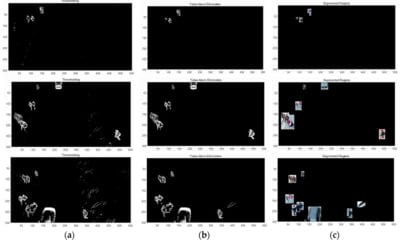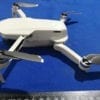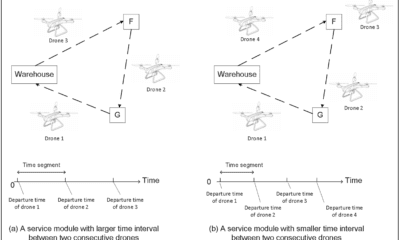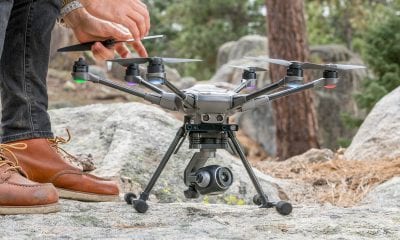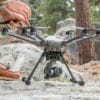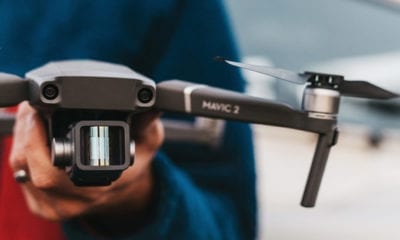
Brands
A Chinese Perspective on Drone-Related Social Changes
A Chinese Perspective on Drone-Related Social Changes
Unmanned aerial vehicles (UAV), or drones are making path breaking advances and setting new benchmarks for image-based communication the world over. Researches Andrea Hamm and Zihao Lin at the Weizenbaum Institute for the Networked Society and the Faculty of Electrical Engineering and Computer Science, Technische Universität Berlin, 10587 Berlin, Germany traced how controversial issues around these supposedly novel tech products are mediated, domesticated, visualized, or marginalized via digital representational technology in the Chinese perspective. Currently China is the country of the largest global consumer drone producer.
Researchers examined 60 most popular using social network analysis and critical discourse analysis, question threads about drones on Zhihu, China’s largest social question answering platform.
Supported by Zhihu’s topic categorization algorithm, drone-related discussions form topic clusters. These topic clusters gain currency in the government-regulated cyberspace, where their meanings remain open to a spectrum of varying interpretations and mediation by various agents. The research found that the largest drone company DJI occupies a central and strongly interconnected position in the discussions. Drones are, moreover, represented as objects of consumption, technological advancement, national future, and uncertainty.
At the same time, the sense-making process of drone-related discussions evokes emerging sets of narrative user identities with potential political effects. Users engage in digital representational technologies publicly and collectively to raise questions and represent their views on new technologies. So, the researchers feel that platforms like Zhihu are essential when studying views of the Chinese citizenry towards technological developments.
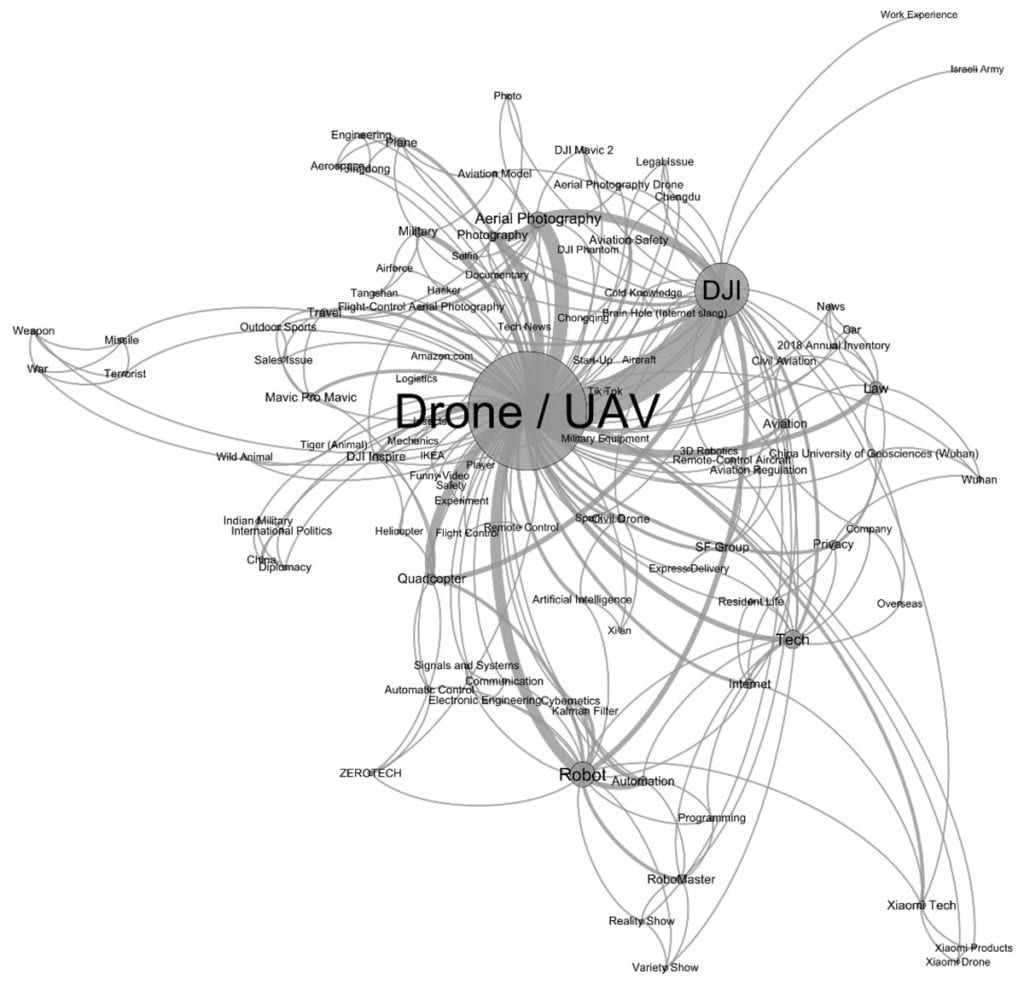
Topic cluster graph around the topic Drone/UAV on Zhihu; generated by Gephi software using the Force Atlas algorithm. The 60 questions ranked by their most endorsed answers have been collected in February 2019, see Appendix A.
Researchers observe that social changes took place parallel to the emergence of drone technologies in China within the last two decades:
- Authoritarian state policy, global business-making and civic engagement has various and sometimes contradicting interests towards drones. All three parties aim to leverage the technology for themselves. The state utilizes drones for social control and national identity-building, companies gain high profits from the drone consumer market and claim the ambition to keep technological world-leadership, and civic drone pilots become equipped to go beyond everyday boundaries and to craft the tech-enhanced views to larger audiences via social networking sites (SNS) such as Sina Weibo, WeChat, or Zhihu.
- At the same time, new boundaries appear to limit and regulate the non-state use of drones and their dissemination. During these processes, drones constitute not merely material entities but also object of discourse raising clusters of controversial issues through which social changes are made viable.
- Researchers say empirical investigation of how drones are shaping and being influenced by the contemporary Chinese society has not been carried out yet. The birth, development and widespread embrace of drones are a part of China’s broader dynamics of a giant digital leap which is characterized by the multitude of tech-savvy netizens on the one hand, and omnipresent state regulation on the other hand. In this regard, social media platform proffers a window for capturing the changing perceptions about changing subjects. In 2018, for example, the largest Chinese social question answering site “Zhihu” has been sanctioned for “not censoring enough content” when netizens criticized the Chinese president Xi Jinping.
Researchers attempt to find answers to the question: “How are drone-related social changes understood and represented by users on Zhihu?”
Researchers added that they carried out this study in a framework of e-participation mediated in a techno-nationalist environment. In their opinion multiple representations of drones and what they mean to Chinese society can be understood by critically studying user-generated contents on SNS which for this study is considered for the purpose of this study as digital representational technologies allowing conclusion of the user’s understandings of technologies.
In this explorative, multi-method study, social network analysis is carried out first to receive an overview of the drone topics on Zhihu. Next critical discourse analysis is conducted to understand how drones are mediated by users as social objects that change Chinese society, and also the world. In the researchers view the entanglement of the two technologies, SNS and drones, as essential for such development.
Conclusions:
From their explorative study researchers found that examining the processes of the self- and social representations in the face of a rapidly developing economy is equally important as examining the development itself. Users engage in digital representational technologies publicly and collectively to raise questions and represent their views on new technologies. The technology-related uncertain social changes become a source and motivation for users to participate in Zhihu in order to navigate themselves socially and collectively. So this study argues that social networking sites like Zhihu are essential sources when studying views of the Chinese citizenry towards technological developments that cannot be discussed freely in common Chinese media outlets.
The combination of results from social network analysis (SNA) and critical discourse analysis (CDA) yields insights into the topology as well as the content of a virtual community. By combining these two methods, methodological shortcomings of both methods were bridged: SNA usually lacking meaningful context and CDA being highly time-intensive and hence restrictive towards the total amount of analyzable material. SNA provides data about the network and the relations among its actors, whereas CDA allocates meaning and sense-making within the network. With this study the research team hopes to have substantially contributed to the methodological literature on virtual communities, in particular, to scholars who are interested in understanding the transformative power of social computing, computer-mediated communication, and community informatics. Such a mixed-method approach can offer grounded insights based on both the utilization of big data and the appreciation of thick data.
Citation: “Why Drones for Ordinary People?” Digital Representations, Topic Clusters, and Techno-Nationalization of Drones on Zhihu, Andrea Hamm and Zihao Lin, Information 2019, 10(8), 256; https://doi.org/10.3390/info10080256, https://www.mdpi.com/2078-2489/10/8/256/htm

